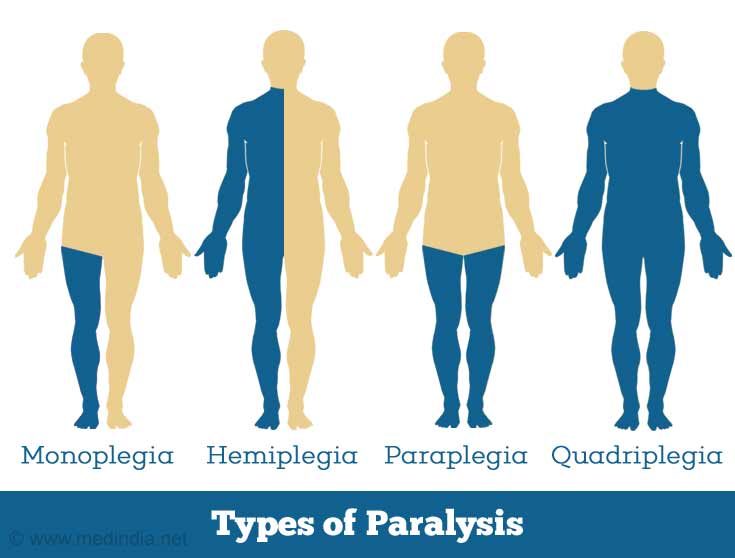What are the Types of Paralysis?
Paralysis can be of numerous types. They can be localized and may affect the face, hands, feet, or even the vocal cords. Paralysis can be generalized, which is based on the affected body part. These can be of the following types:
- Monoplegia: This type affects only one arm or one leg
- Hemiplegia: This type affects one arm and one leg on the same side of the body
- Paraplegia: This affects both legs
- Quadriplegia: Also called tetraplegia, this type affects all four limbs

There are also other types of paralysis, which include:
- Sleep Paralysis: This is a temporary paralysis and occurs during dreaming or rapid eye movement (REM) sleep. Sometimes a person may suddenly wake up in a paralysis state. This is known as waking paralysis.
- Ascending / Descending Paralysis:
- Ascending paralysis gradually moves from the lower part of the body towards the upper part and can be caused by the autoimmune disorder known as Guillain-Barré Syndrome. It can also be caused by tick bites due to injection of a neurotoxin from the tick’s salivary glands into the body (tick paralysis). Tick paralysis is a feature of Lyme disease.
- Descending paralysis moves in the opposite direction, i.e. downwards and can be caused by botulism.
- Drug-induced Paralysis: Drugs such as curare, which interfere with nerve function, can cause paralysis.
- Pseudoparalysis: As the name suggests, this is a false paralysis. It can occur due to the restriction of motion as a result of intractable pain, incoordination of the muscles, orgasm, or extreme mental stress such as panic anxiety disorder, amongst others.






